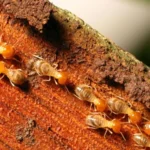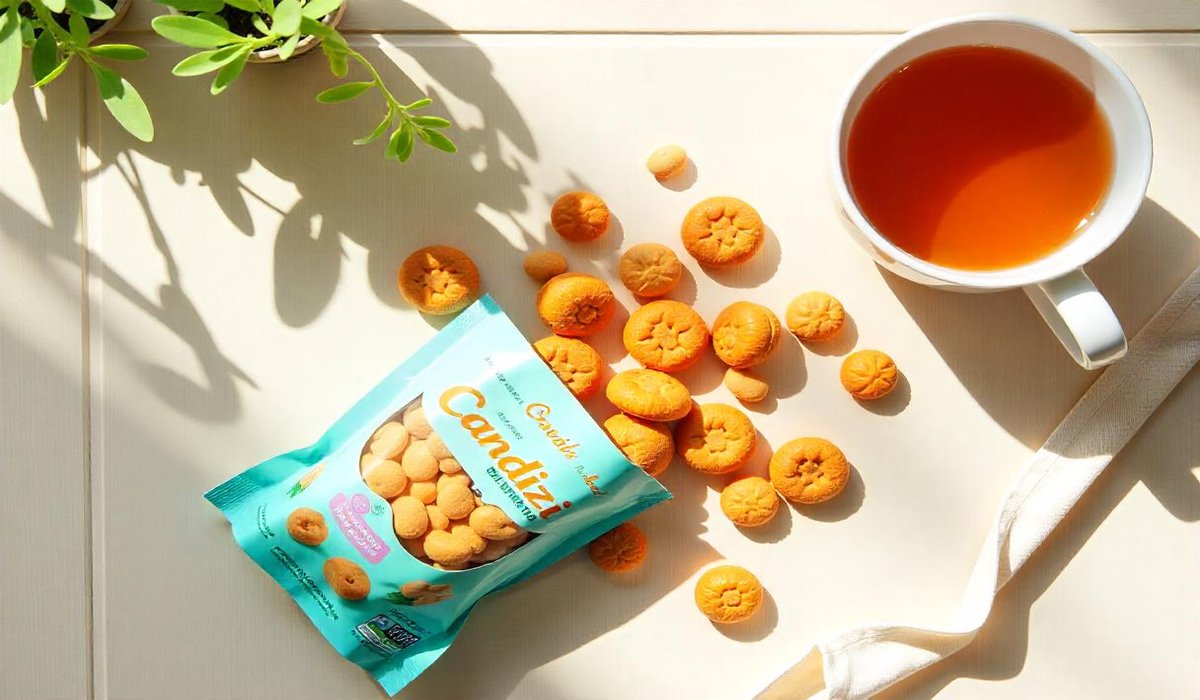Imagine biting into a fig so uniquely sweet and honeyed, its golden-green skin hiding an amber jewel within, that it tastes like sunshine captured in fruit. This isn’t your ordinary fig; this is the Byadi, a rare and treasured variety whispered about in Middle Eastern markets and sought after by fruit connoisseurs. Often called the “white fig” or “golden fig,” the Byadi boasts a distinct character and heritage that sets it apart from its darker cousins. Let’s peel back the layers on this exquisite fruit.
The Byadi’s Rich Heritage: Roots in the Cradle of Civilization
The Byadi fig (Ficus carica ‘Byadi’) traces its lineage back centuries, deeply rooted in the fertile crescent – particularly Syria and Lebanon. Its name, derived from Arabic words meaning “white,” perfectly describes its luminous, pale green to yellowish skin when ripe. Unlike the deep purple or black figs common in Western supermarkets, the Byadi presents a subtle elegance.
- Ancient Origins: Fig cultivation is one of humanity’s oldest agricultural practices, dating back over 11,000 years. The Byadi is believed to be one of the ancient heirloom varieties cultivated in this region, thriving in the hot, dry summers and mild winters.
- A Cultural Staple: For generations, Byadi trees have graced family orchards and courtyards across Syria and Lebanon. They are more than just a fruit tree; they represent heritage, resilience, and a deep connection to the land. Dried Byadi figs were a vital source of winter nutrition and energy.
- Preserving Tradition: Despite modern challenges, dedicated farmers and organizations work tirelessly to preserve these ancient Byadi orchards, recognizing their cultural and genetic importance. Think of these orchards as living libraries, safeguarding agricultural biodiversity.
Byadi Fig vs. Common Fig Varieties
| Feature | Byadi Fig | Common Purple Fig (e.g., Mission) | Kadota Fig |
| Skin Color | Pale Green-Yellow (Golden) | Deep Purple-Black | Green-Yellow |
| Pulp Color | Amber to Light Pink | Deep Red | Light Amber |
| Flavor | Exceptionally Sweet, Honeyed | Rich, Berry-like | Mildly Sweet, Subtle |
| Texture | Tender, Juicy | Dense, Chewy | Firm, Less Juicy |
| Primary Use | Fresh Eating, Drying | Fresh Eating, Drying, Preserves | Canning, Drying |
Recognizing the Golden Treasure: What Makes Byadi Unique?
Spotting a true Byadi fig is part of the adventure. Forget the dark, jammy exteriors you’re used to.
- Distinctive Looks: The Byadi’s skin is thin and delicate, ripening to a beautiful light golden-green or yellow hue. It often lacks the dramatic cracks of some figs, maintaining a smoother appearance. Inside, expect a stunning amber or light pink pulp, packed with tiny, edible seeds.
- A Flavor Symphony: Here’s where the Byadi truly shines. Its flavor profile is exceptionally sweet, often described as pure honey or caramel with floral undertones. The sweetness is intense but clean, lacking the sometimes-overpowering berry notes of dark figs. The texture is tender and yielding, bursting with juice.
- The “Eye” Factor: Like most figs, the Byadi has a small opening at the bottom called the “ostiole” or “eye.” This is where pollinating wasps enter in some varieties (though many figs, including Byadi, are often parthenocarpic, meaning they develop fruit without pollination). A slightly open, sticky eye often signals perfect ripeness and intense sweetness.
Read also: Prosecchini: Italy’s Secret Weapon for Effortless Sparkling Joy (And Why You Need Them)
Cultivating the Golden Gem: How Byadi Figs Thrive
Growing a Byadi fig tree is a rewarding endeavor, but it demands specific conditions, echoing its Mediterranean origins.
- Sun Worshipers: These trees crave full, blazing sun – at least 8 hours daily. Ample sunlight is non-negotiable for developing that signature sweetness and golden color. Think of them as solar panels converting light into liquid honey.
- Heat is Key: Byadi figs flourish in hot summer climates (USDA zones 7-10, ideally). They need long, warm growing seasons to ripen their fruit properly. Cooler coastal summers might not provide enough heat units.
- Well-Drained Soil is Mandatory: Fig roots despise sitting in water. Plant your Byadi in sandy, loamy soil that drains exceptionally well. Raised beds are excellent insurance against root rot in heavier soils.
- Watering Wisely: While drought-tolerant once established, consistent moisture is crucial during fruit development and ripening. Deep, infrequent watering is better than frequent sprinkles. Ease off watering as fruits near ripeness to concentrate sugars.
- Pruning for Prosperity: Prune in late winter to remove dead wood, encourage airflow, and shape the tree. Focus on opening up the center to allow sunlight to penetrate. Less is often more with fig pruning.
From Orchard to Table: Savoring the Byadi Experience
The Byadi fig is a fruit best enjoyed in its purest form, celebrating its unique character.
- The Fresh Feast: There’s nothing quite like plucking a perfectly ripe Byadi straight from the tree, warm from the sun. Eat it whole, skin and all, to experience the full symphony of flavor and texture. Its delicate sweetness needs no accompaniment. Serve fresh Byadis on a cheese platter with mild goat cheese or burrata, drizzle lightly with honey (if you dare!), and add a sprinkle of pistachios.
- Drying Gold: Drying is a traditional and superb way to preserve Byadi figs. Their high sugar content makes them ideal candidates. Dried Byadis become intensely sweet and chewy, like nature’s caramel candy. Enjoy them as a snack, chopped into oatmeal or granola, or rehydrated in stews and tagines for a sweet depth. Syrian households often store jars of these golden dried treasures.
- Culinary Creations: While subtle, the Byadi can elevate dishes:
- Halve and briefly grill or roast to caramelize their natural sugars, serving with grilled meats or creamy desserts.
- Blend into smoothies for natural sweetness.
- Make delicate jams or preserves, though their pale color yields a light golden spread, not a deep purple one.
- Use in salads where their color and sweetness contrast beautifully with bitter greens, salty cheese (like feta), and a light vinaigrette.
The Sweetness Within: Potential Health Perks
Like all figs, Byadis pack a nutritious punch beneath their golden skin. While not a magic bullet, they offer valuable benefits:
- Fiber Powerhouse: Figs are an excellent source of dietary fiber, both soluble and insoluble. This supports digestive health, promotes regularity, and helps you feel full. Think of each fig as a tiny broom for your digestive tract.
- Mineral Boost: They are a good source of essential minerals like potassium (important for blood pressure), calcium (for bones), magnesium (for muscle and nerve function), and iron (for blood health).
- Antioxidant Allies: Figs contain various antioxidants, including phenols and flavonoids. These compounds help combat oxidative stress in the body, potentially reducing the risk of chronic diseases. The Byadi’s lighter skin means fewer anthocyanins (the purple antioxidants in dark figs) but other beneficial compounds are present.
- Natural Energy: Their high natural sugar content makes them a great source of quick, unrefined energy – perfect for a pre-workout snack or an afternoon pick-me-up. Farmer Ahmed in Homs famously credits dried Byadis for his stamina during long harvest days.
Finding the Golden Treasure: Sourcing Authentic Byadi Figs
Because Byadi figs are less common commercially, finding them requires some effort:
- Specialty Markets & Middle Eastern Grocers: Your best bet is often Middle Eastern or Mediterranean specialty grocery stores, especially during late summer and early fall. Ask for “white figs,” “Byadi,” or “Bayadi.”
- Farmers Markets: In regions with significant Mediterranean populations or suitable climates (like California), check local farmers markets. You might find a passionate grower specializing in heirloom varieties.
- Online Specialty Retailers: Several online fruit retailers and heirloom nurseries now offer fresh Byadi figs in season or dried Byadi figs year-round. Expect a premium price due to their rarity and perishability.
- Growing Your Own: For the ultimate connection, consider planting a Byadi fig tree! Reputable heirloom fruit tree nurseries often carry them. Ensure your climate is suitable (lots of heat and sun!).
3 Actionable Tips to Embrace the Byadi Magic
- Seek & Savor Fresh: Make it a mission to find fresh Byadis next season. Visit specialty grocers or farmers markets late summer. Taste one at peak ripeness – let that honeyed flavor be your benchmark.
- Try Dried Gold: If fresh are elusive, source high-quality dried Byadi figs. Compare their complex sweetness to common dried figs – the difference is often remarkable.
- Plant a Legacy: If you have the sun and space (even a large pot!), plant a Byadi fig tree. It’s a rewarding way to connect with ancient foodways and enjoy unparalleled fruit for years.
The Byadi fig is more than just fruit; it’s a taste of history, a golden gem nurtured by sun and tradition. Its unique sweetness and luminous beauty offer a delightful departure from the ordinary. Whether you’re lucky enough to find them fresh, savor them dried, or dream of growing your own, discovering the Byadi is a journey worth taking. Have you ever tasted a Byadi fig? Share your experience or questions about this golden treasure below!
(FAQs)
- What does a Byadi fig taste like?
Byadi figs are renowned for their exceptionally sweet, honey-like, or caramelized flavor, often with subtle floral notes. They are typically sweeter and less berry-like than common dark purple figs, with a tender, juicy texture. - Are Byadi figs the same as Kadota figs?
No, they are distinct varieties. While both have greenish-yellow skin, Kadota figs (common in canning) are generally larger, have thicker skin, firmer flesh, and a milder, less intensely sweet flavor compared to the delicate, honeyed Byadi. - Why are Byadi figs harder to find?
Their thin skin makes them highly perishable and challenging to ship long distances commercially. They are also primarily heirloom varieties concentrated in specific regions (like Syria/Lebanon), not grown on the massive scale of common fig types like Mission or Brown Turkey. - Can I grow a Byadi fig tree in a colder climate?
It’s challenging. Byadi figs require long, hot summers (USDA zones 7-10 ideally) to ripen properly. In cooler zones (5-6), they might survive with winter protection, but fruit ripening is unreliable. Container growing with winter storage is an option but still requires ample summer heat. - Are Byadi figs good for you?
Yes, like all figs, Byadis are a good source of dietary fiber, potassium, calcium, magnesium, and antioxidants. Their natural sugars provide energy. However, dried figs are very concentrated in sugar and calories, so enjoy them in moderation. - How do I know when a Byadi fig is ripe?
Look for a soft feel (not mushy), a color change from green to a light golden-green or yellow, a slight droop on the stem, and sometimes a tiny drop of honey-like syrup at the “eye” (bottom). Ripe figs are very perishable and should be eaten quickly. - What’s the best way to use dried Byadi figs?
Enjoy them as a chewy, naturally sweet snack. Chop them into oatmeal, yogurt, or granola. Add them to baked goods (breads, muffins). Rehydrate them in warm water or tea and use in stews, tagines, or compotes. Pair them with cheeses and nuts.
You may also like: Candizi: Your New Secret Weapon for Chill Vibes & Happy Taste Buds?











